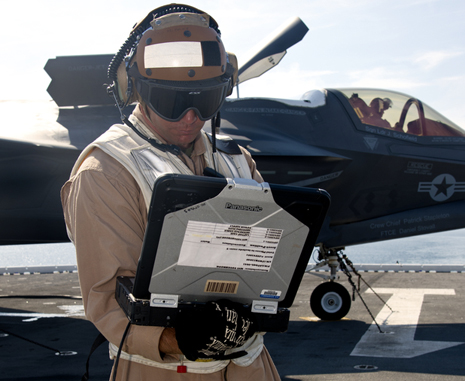Newly released U.S. Air Force documents reveal the identity and fielding schedule for a critical component of the electronic warfare system for the
.
The environmental impact statement released as part of the Air National Guard “beddown” process that establishes several new F-35A bases also identifies the unique radar chaff system tailored for the F-35.
“The ARM-210 chaff proposed for use by the F-35A is currently unavailable and undergoing testing,” the documents say. “It is expected to be available for use in 2020.”
That timeline loosely aligns with a previous disclosure by the F-35 Joint Program Office that the aircraft will receive an “advanced chaff” upgrade during the Block 4 follow-on modernization program.
Radar chaff is a standard defensive aid on so-called fourth-generation fighters. The environmental impact statement includes a detailed description of how the technology works.
“A bundle of chaff consists of approximately 5 to 5.6 million fibers that are cut to reflect radar signals, and when dispensed from aircraft, form an electronic ‘cloud’ that breaks the radar signal and temporarily hides the maneuvering aircraft from radar detection,” the document says.
The ARM-210 designation breaks from the traditional nomenclature for chaff. Besides the B-52 and some
variants, the rest of the U.S. military aircraft fleet equipped with chaff carry cartridges with the designations RR-170, RR-180 and RR-188. For ARM-210, the “A” appears to stand for “air-launched,” and the “R” likely denotes “chaff.” But the meaning of the third letter “M” isn’t clear. It usually stands for “missile,” but it isn’t clear how that term may be applied to a chaff cartridge.
The F-35’s ASQ-239 electronic warfare suite also includes the ALE-70 towed decoy. When an F-35 pilot anticipates being targeted by radar-guided missiles, the ALE-70 can be deployed on a tether behind the aircraft. The decoy emits a radio frequency signal stronger than the F-35 to fool the radar seeker on the incoming missile.
As a back up to the decoy or for use when the ALE-70 isn’t deployed, the F-35 pilot also can dispense chaff to fool radar--guided missiles.
The F-35 also carries MJU-61 magnesium flares to counter incoming missiles guided by an infrared seeker.

